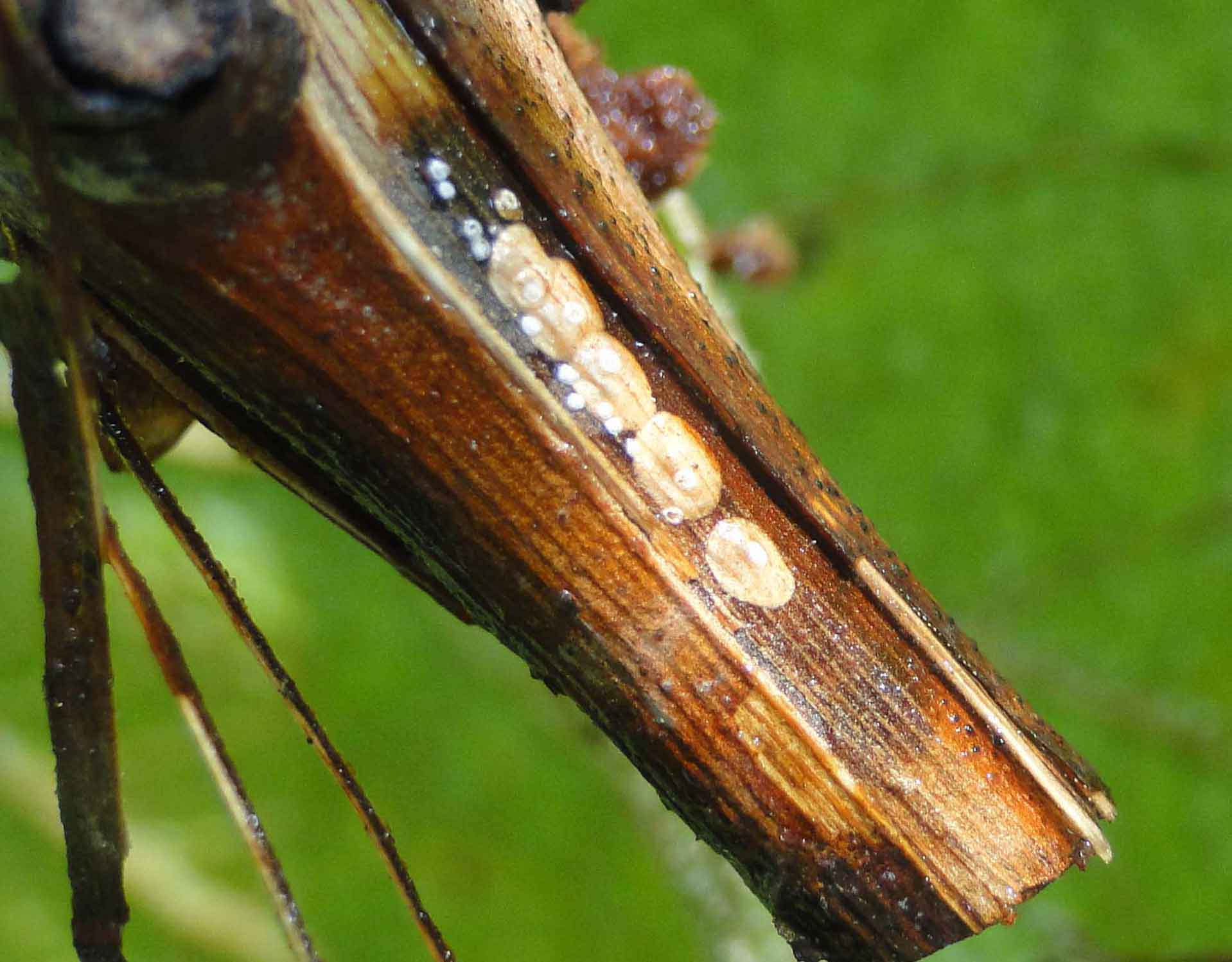
Immature scales overwinter on the grape trunks and resume development in the spring (Kosztarab (1996) reported mature females overwintering in Ohio). In May or June (June 16 at Roanoke in 1983), crawlers disperse from the maternal scales. After wandering for 24-48 hours, the crawlers settle, begin to feed, and secrete their scale coverings. They may settle along naturally occurring grooves or crevices in the bark. There are two nymphal instars, that remain under their scale coverings. The females never move from their sites; but, when the males are mature in the spring they leave their scales, fly to the females, and mate. The male flight period is of short duration.
Adult scales are whitish in color and may create whitish patches on vine trunks when colonies are present. Vigorous vines are less severely affected. Grape scales seldom reach damaging numbers in commercial vineyards, although in the early years of this century important damage was reported. This species may be seen most frequently on backyard vines.
Johnson et al. (1999) recommended a dormant
oil
spray,
and timing a spray of diazinon or carbaryl with degree days
against
crawlers,
at 274 and 550 degree days after 1 April, above 10 degrees C
(493 and
990 DD above a
base
of 50 degrees F).